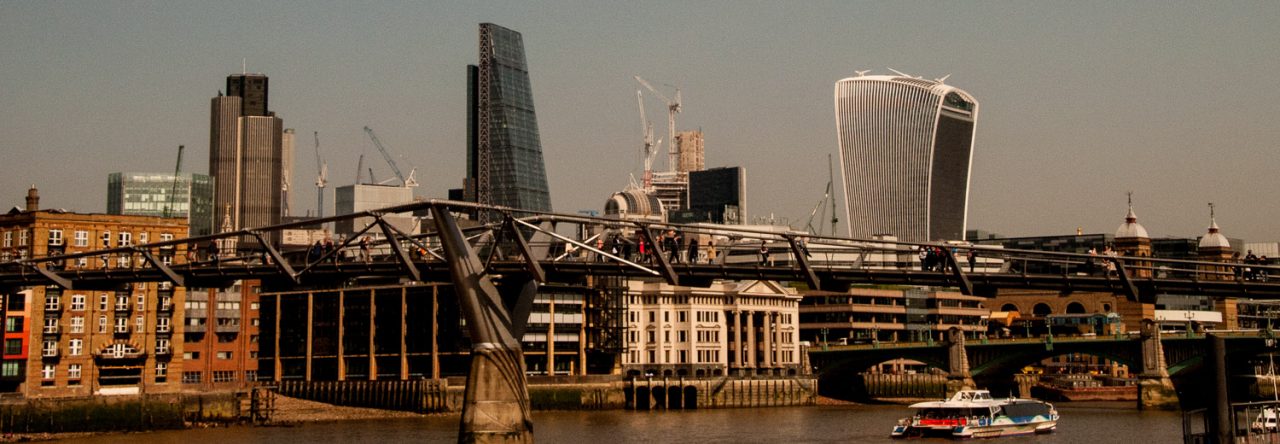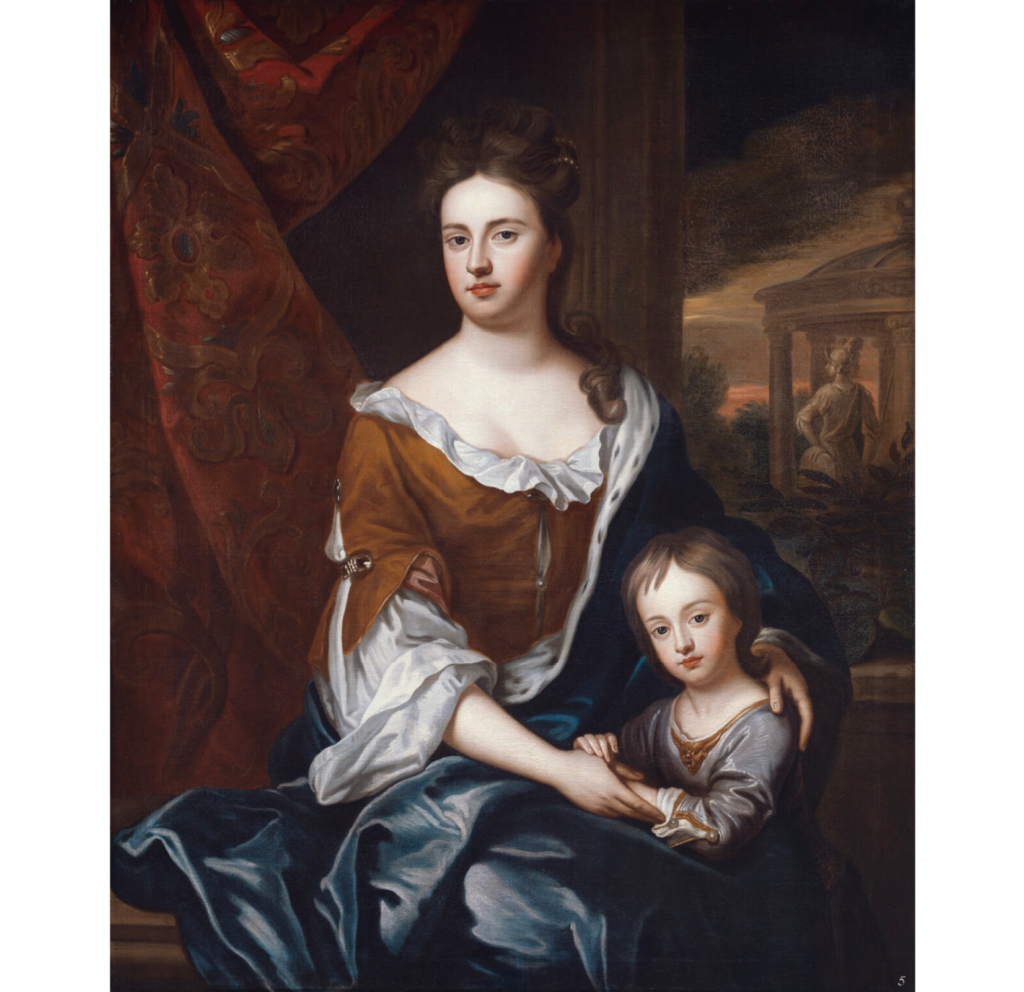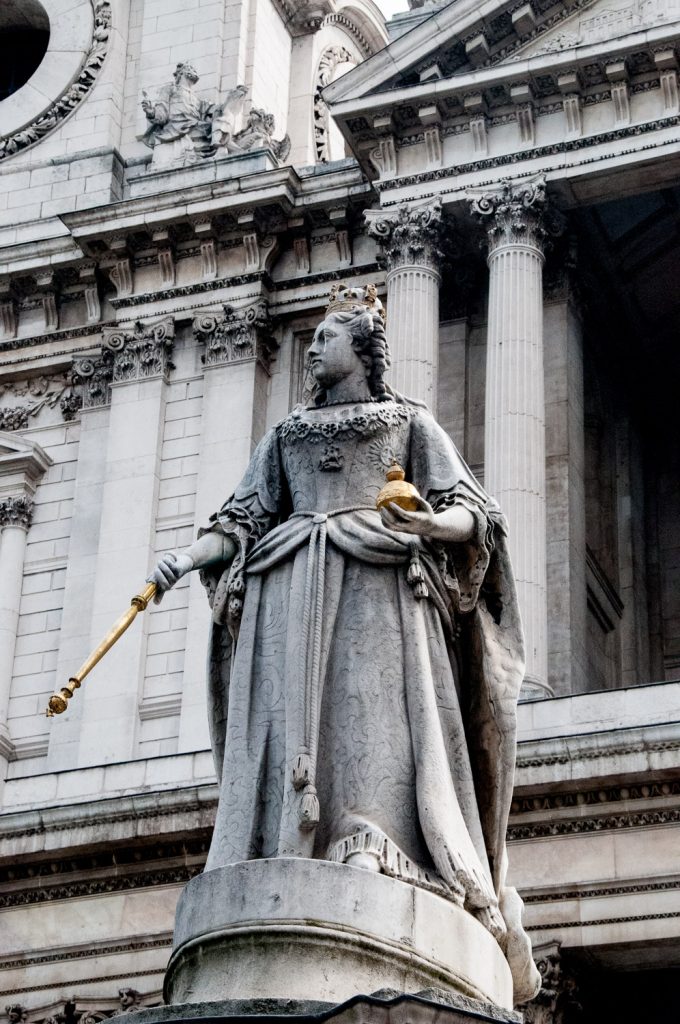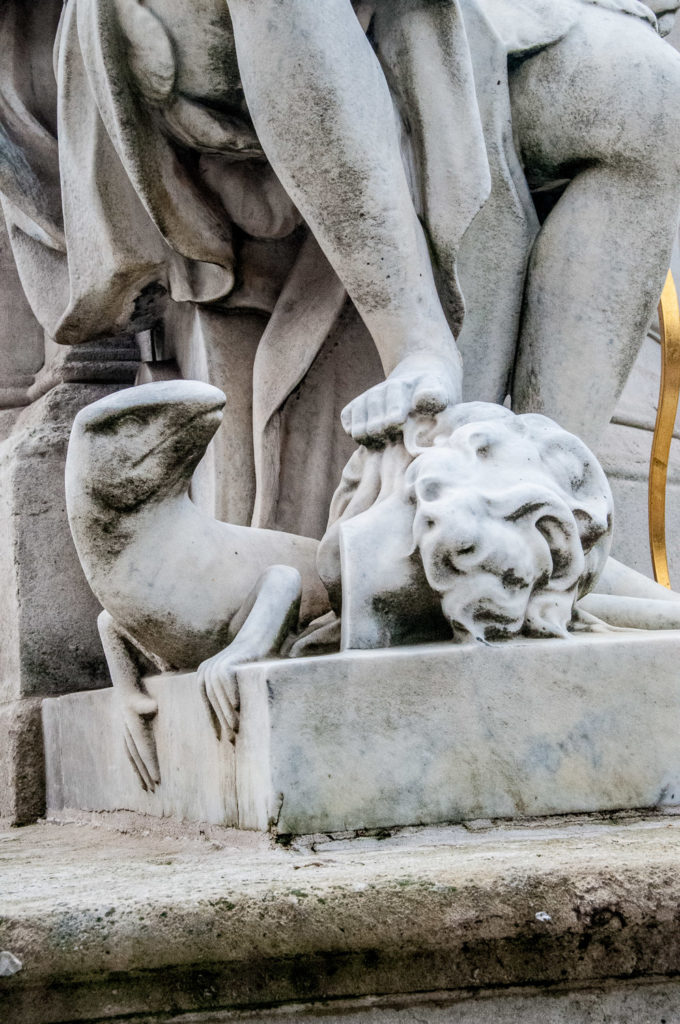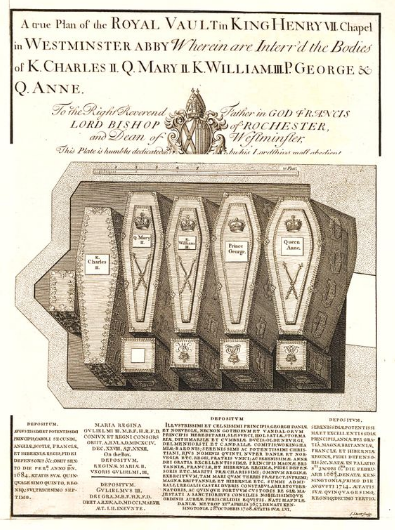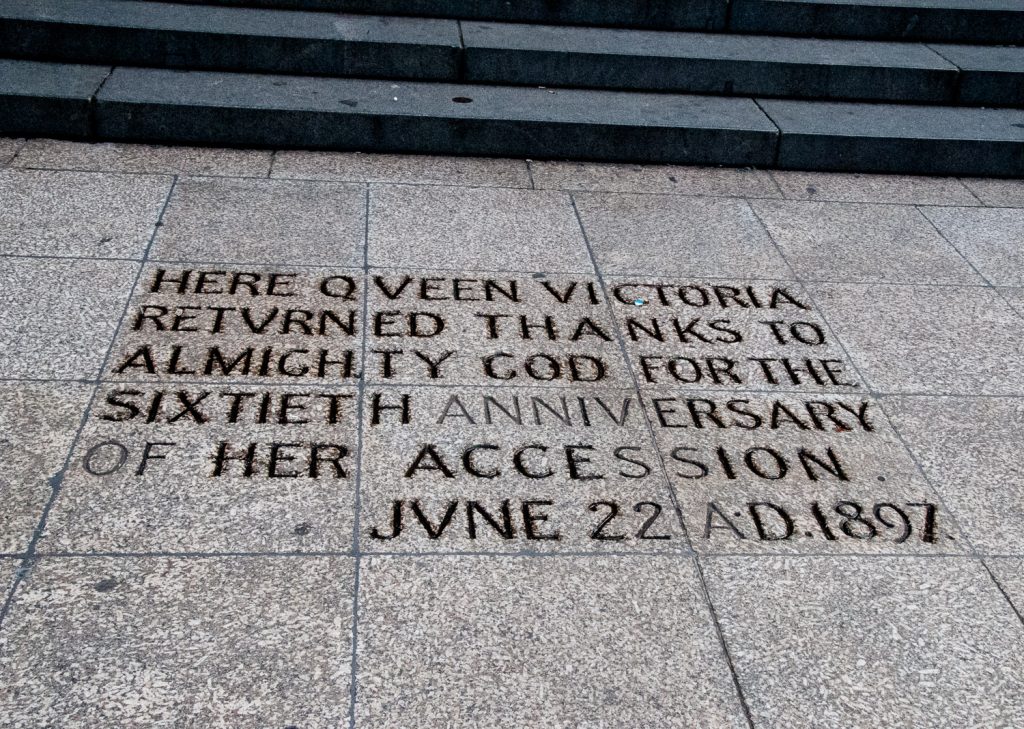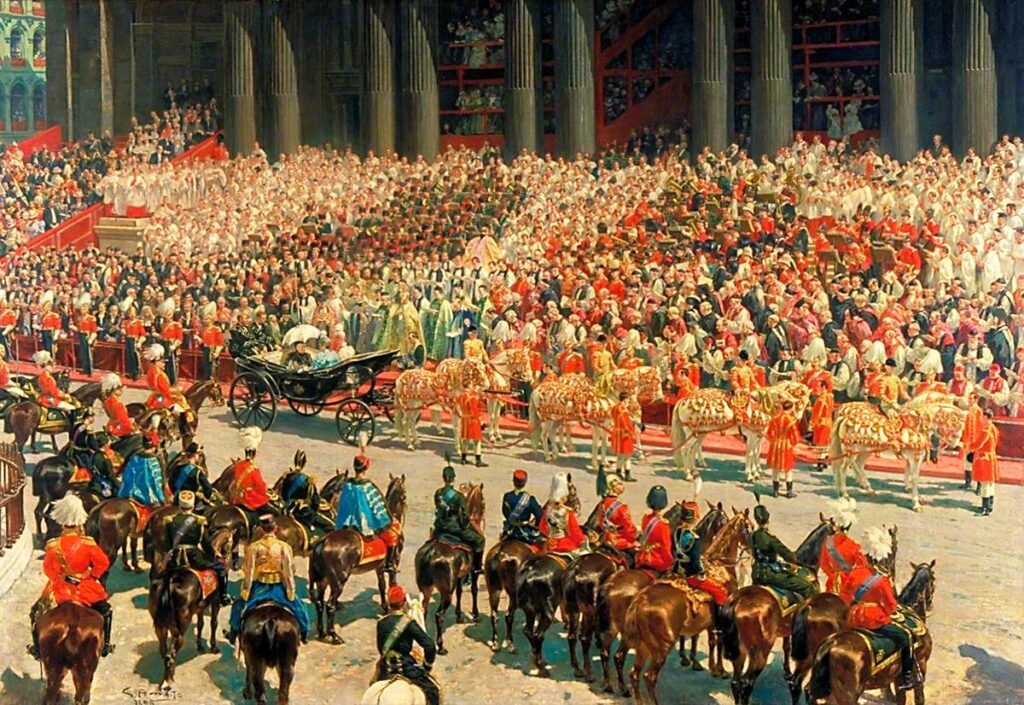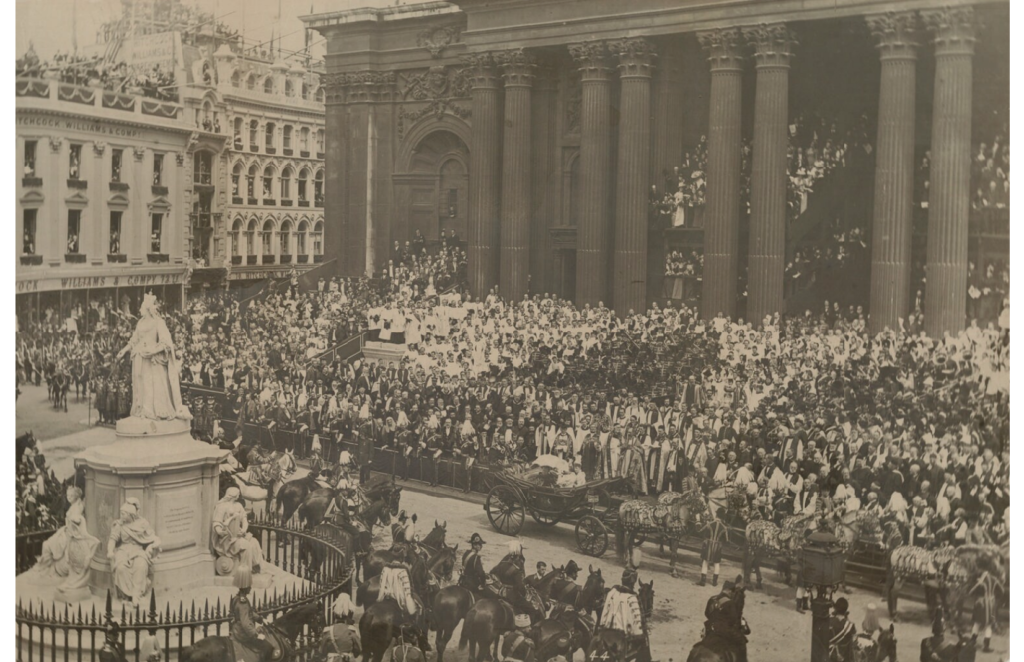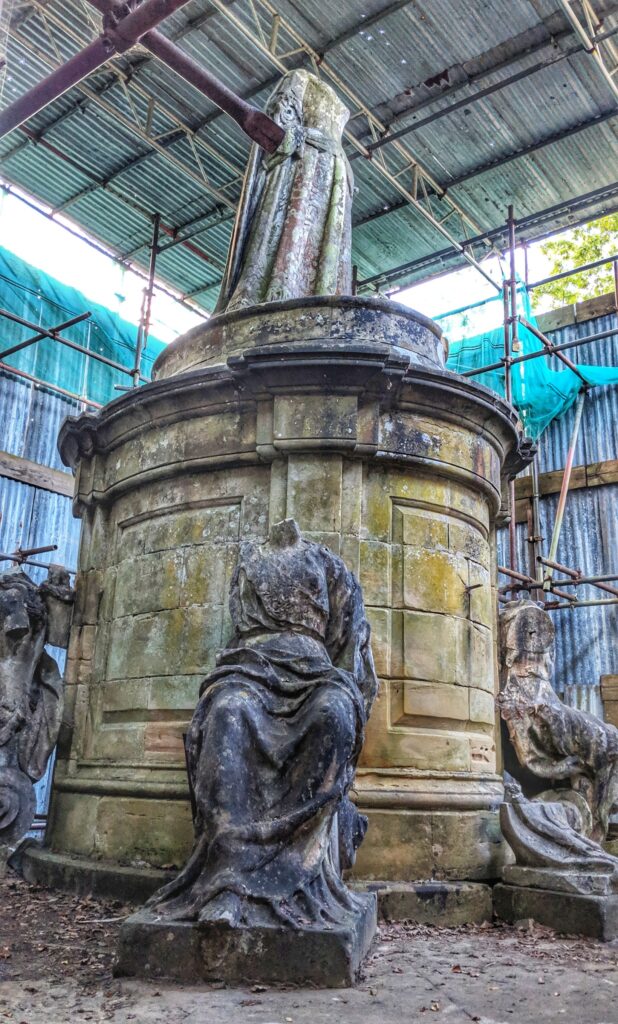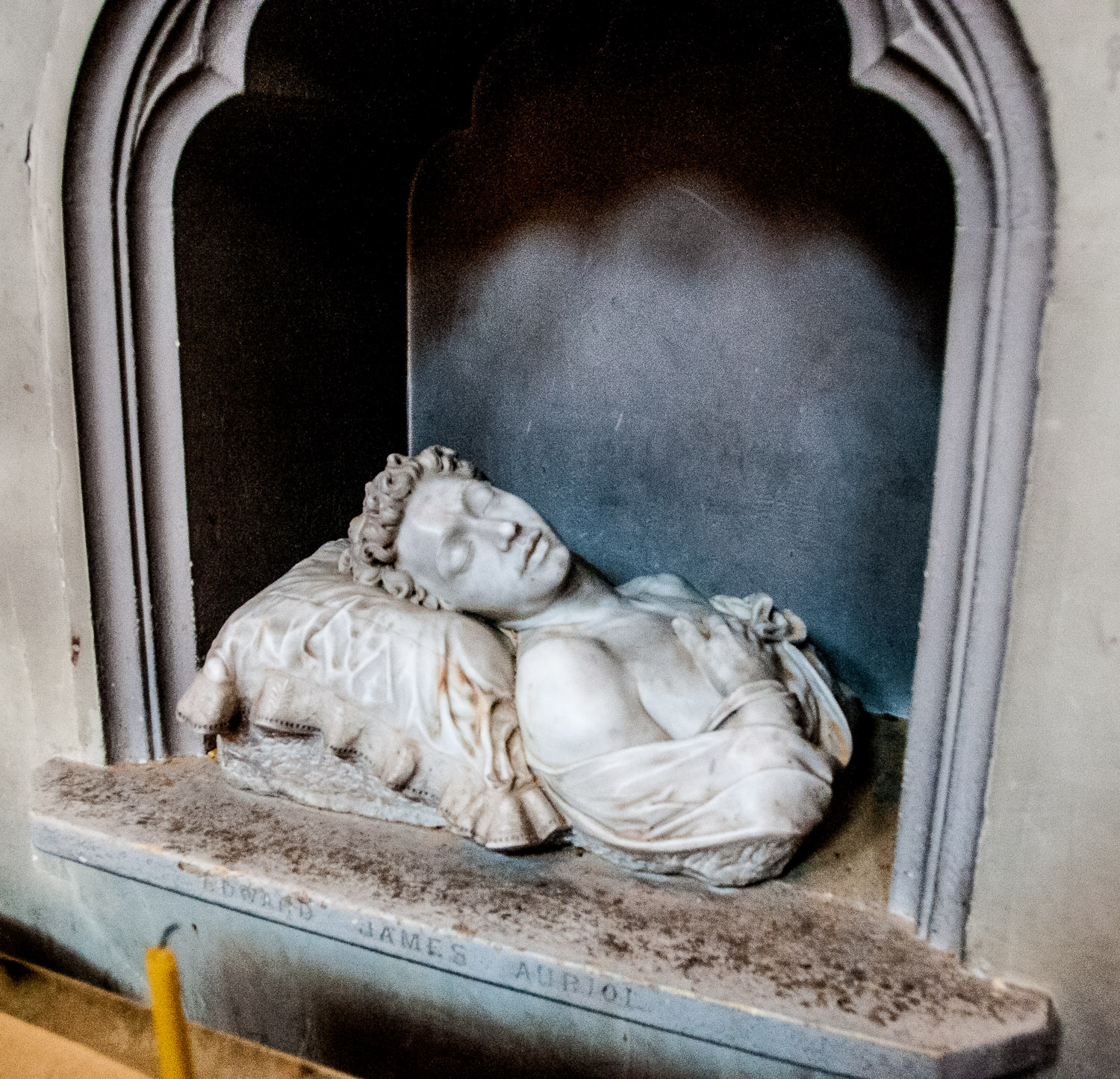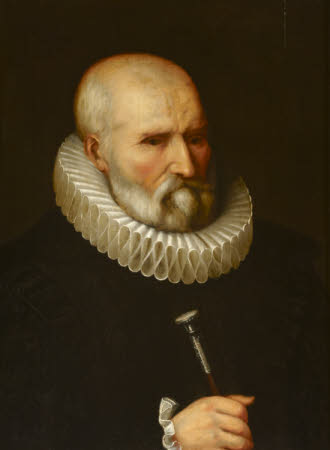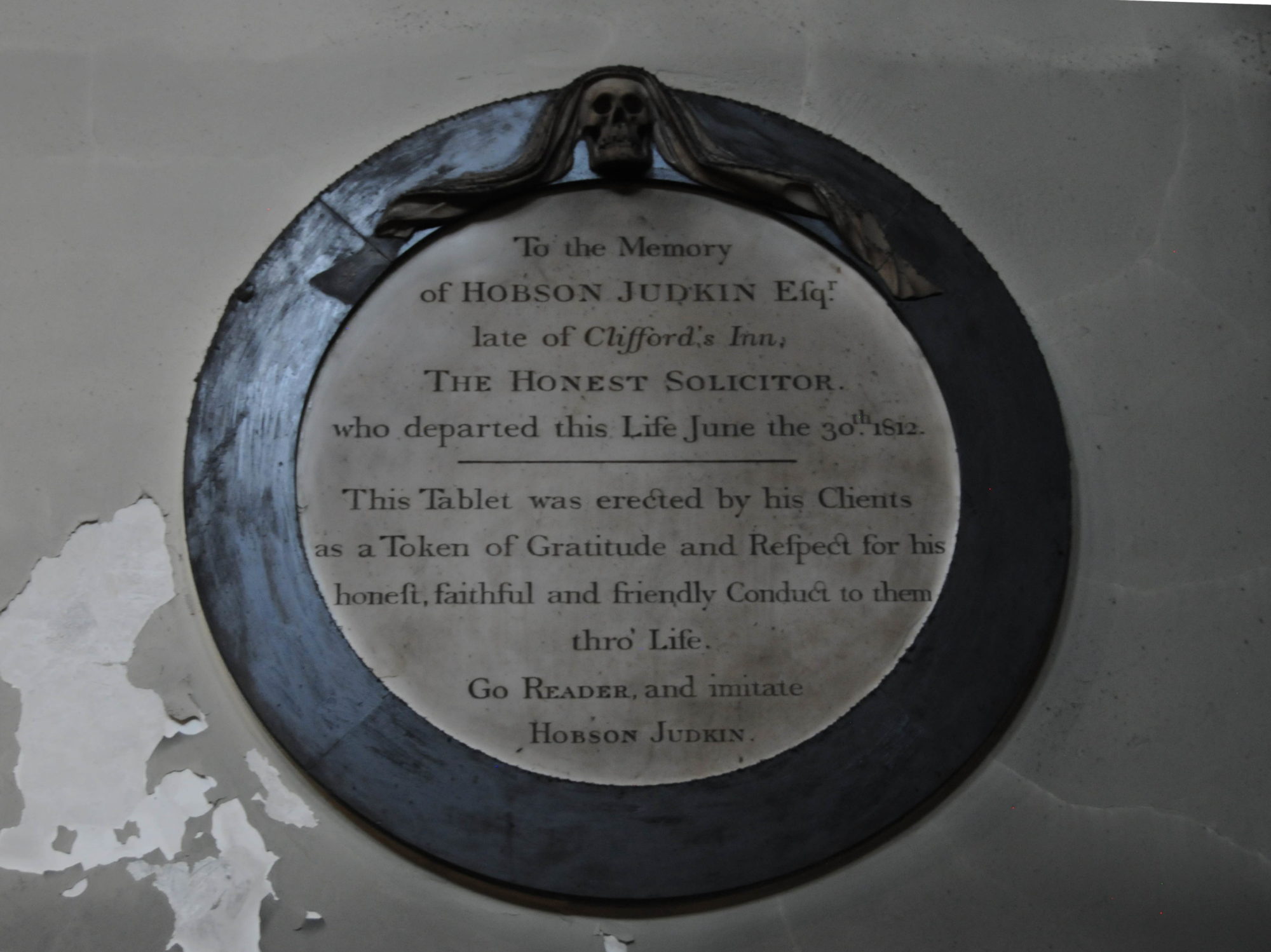Is this the creepiest sculpture to be found in the City?
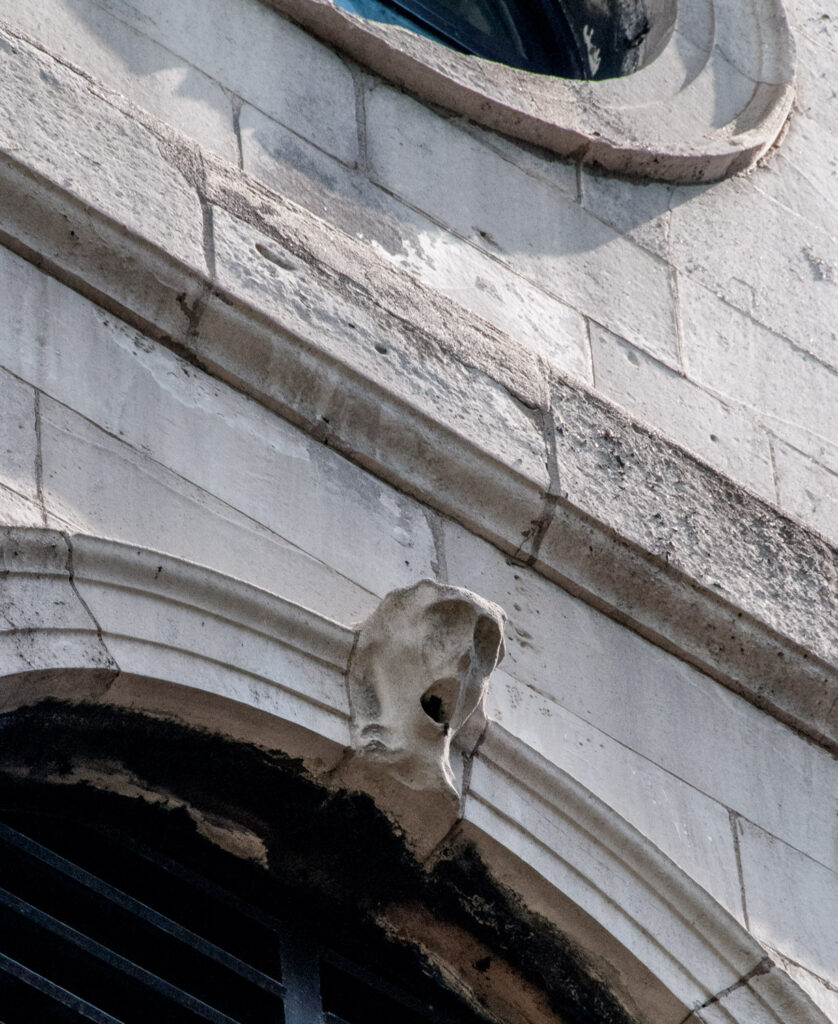
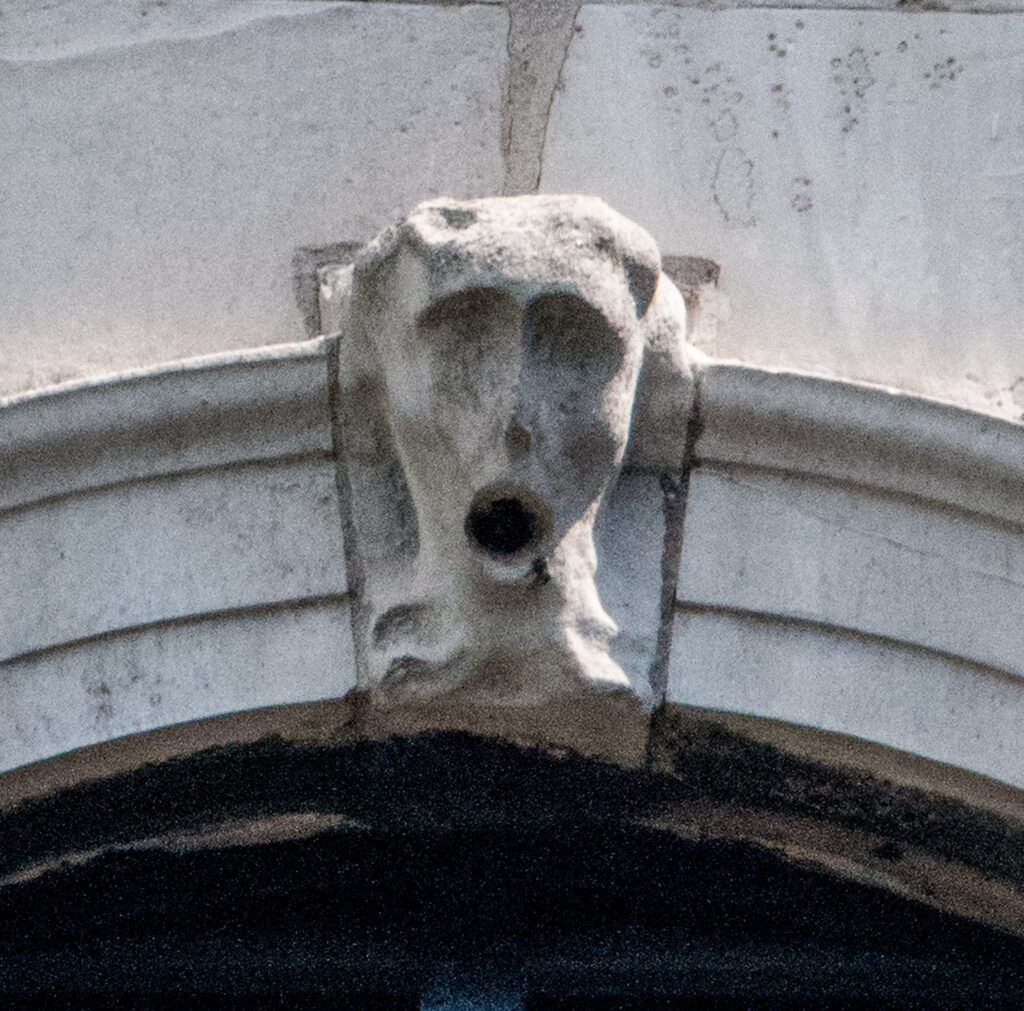
It’s on the tower of St Mary Somerset (EC4V 4AG). This was a Wren church, but I don’t think either he, or his very competent colleague Nicholas Hawksmoor, had anything to do with this screaming face. Their style was more cheerful cherubs and occasionally dragons or a phoenix.
The church was demolished in 1871 but the tower was saved and restored by the architect Ewan Christian who was also responsible for the National Gallery. It was probably him, therefore, who installed the head. It predates Munch’s picture but reminds me of it …
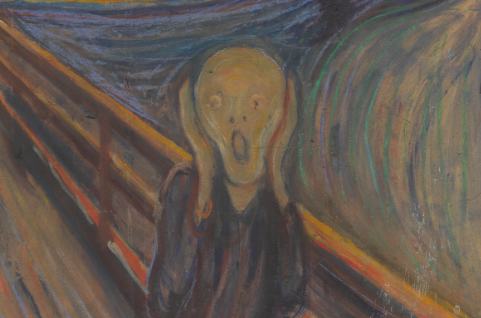
You can read more about the church and its background on The Londonist website from which I have borrowed this picture by Tony Tucker indicating where the screamer can be found …
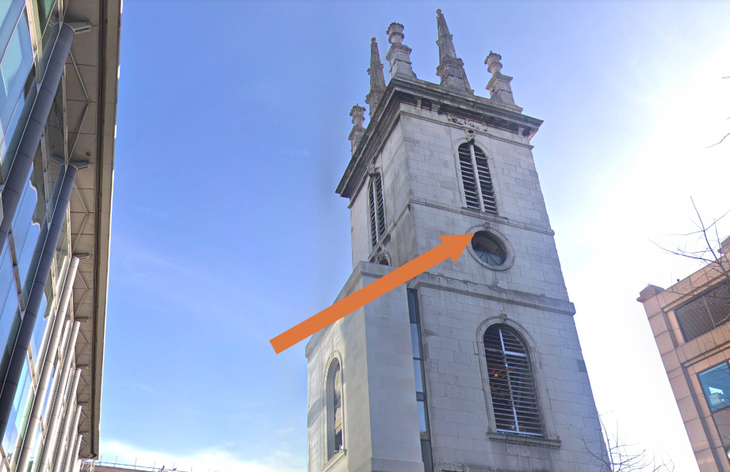
The tower is now a private home.
The Guildhall building at 71 Basinghall Street boasts a menagerie of strange creatures (EC2V 7HH). Some sit either side of the entrance …
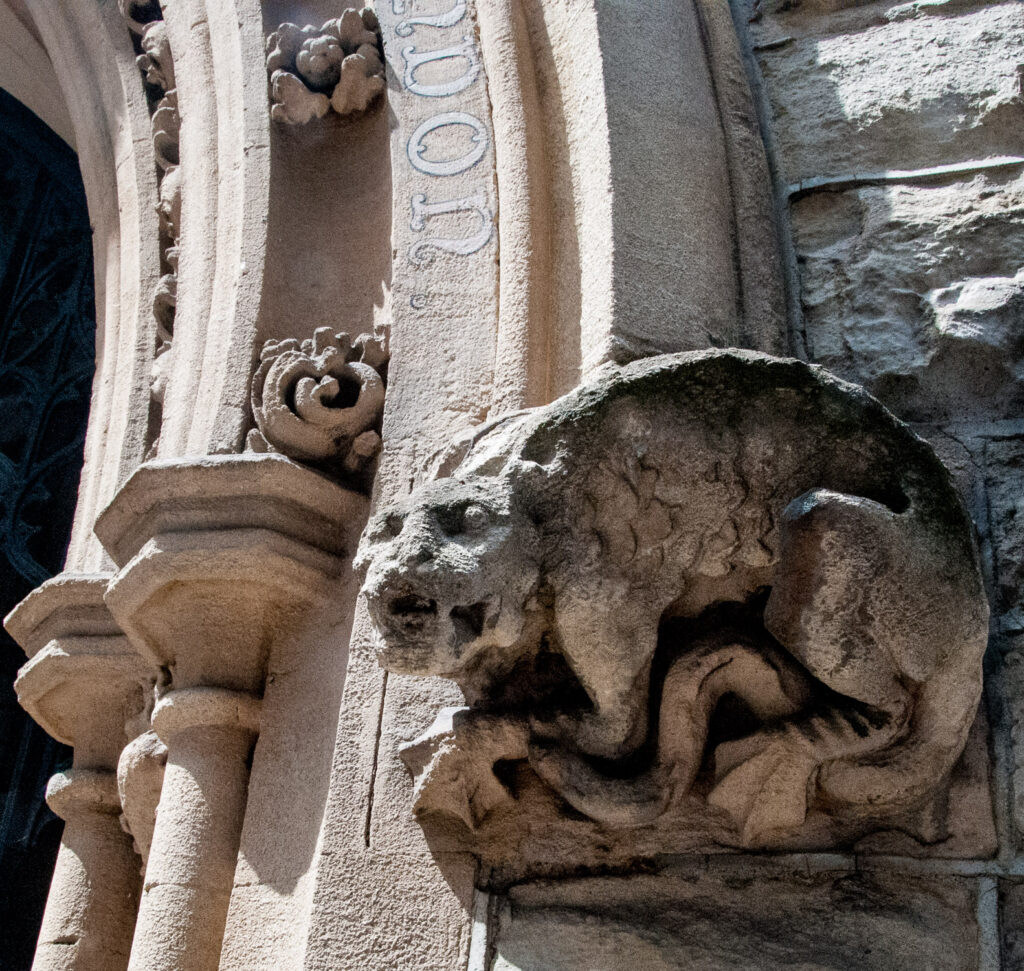
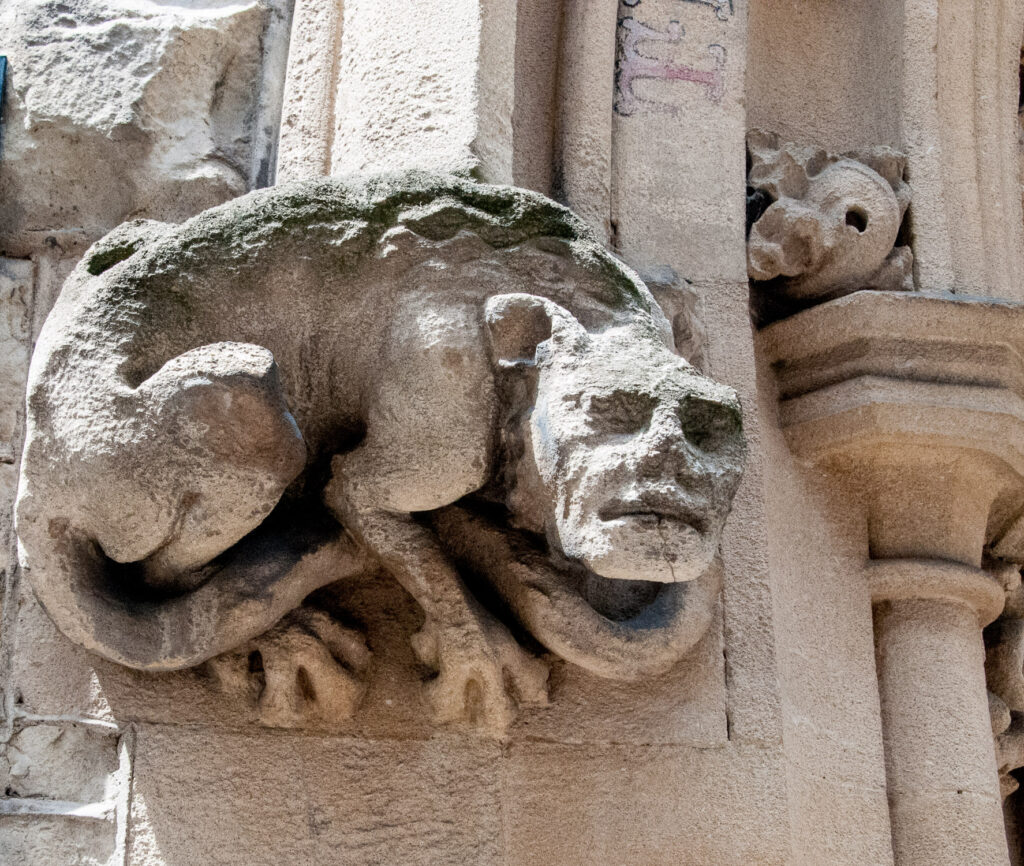
Others lurk near the top of the building …
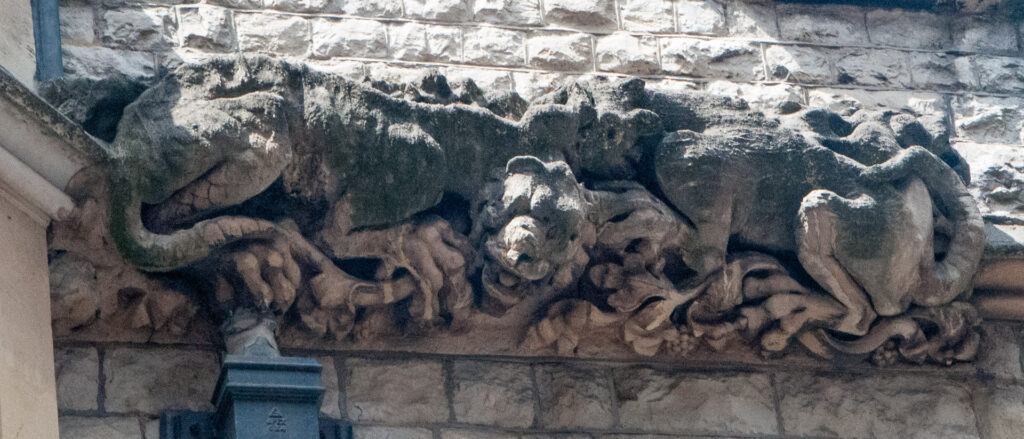
… and on the roof itself …
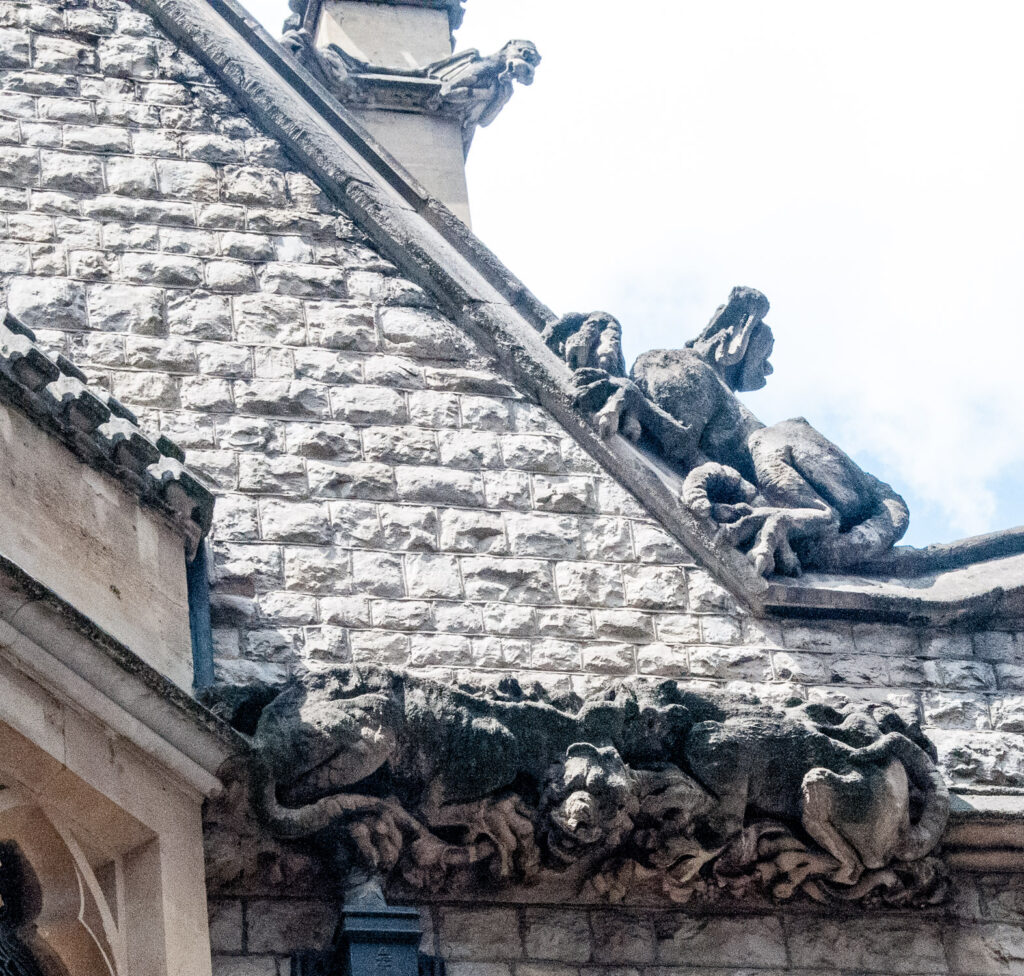
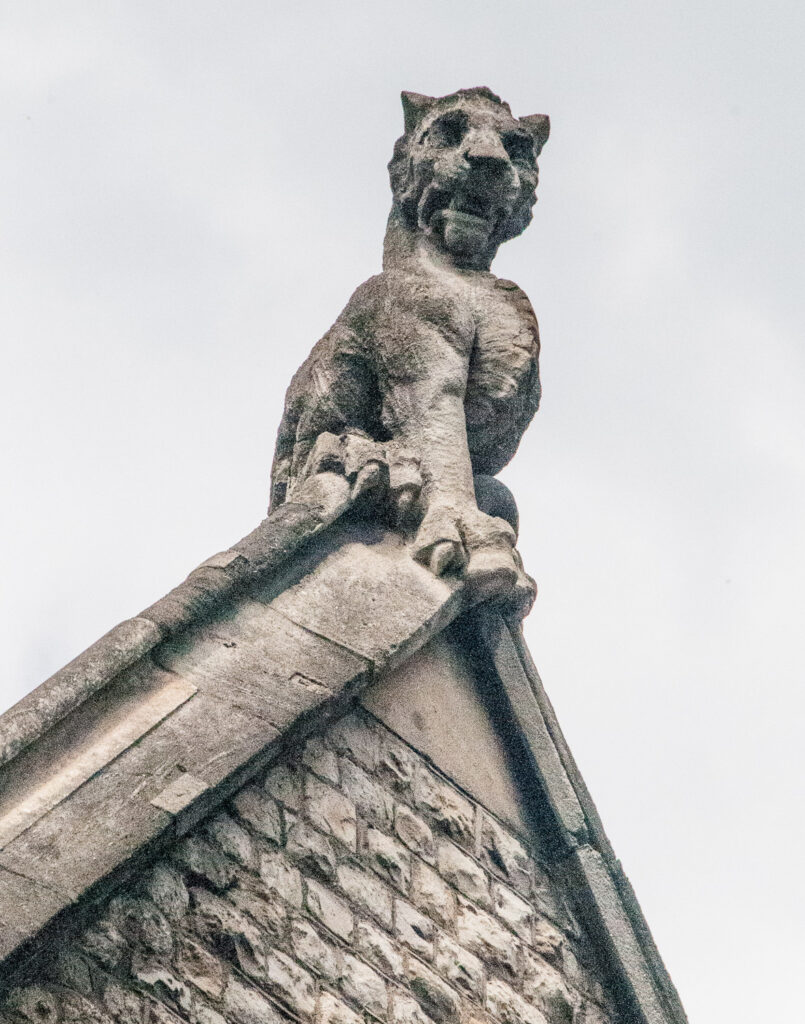
A predatory bird keeps a beady eye on you from the roof of 60 Lombard Street (EC3V 9EA) …
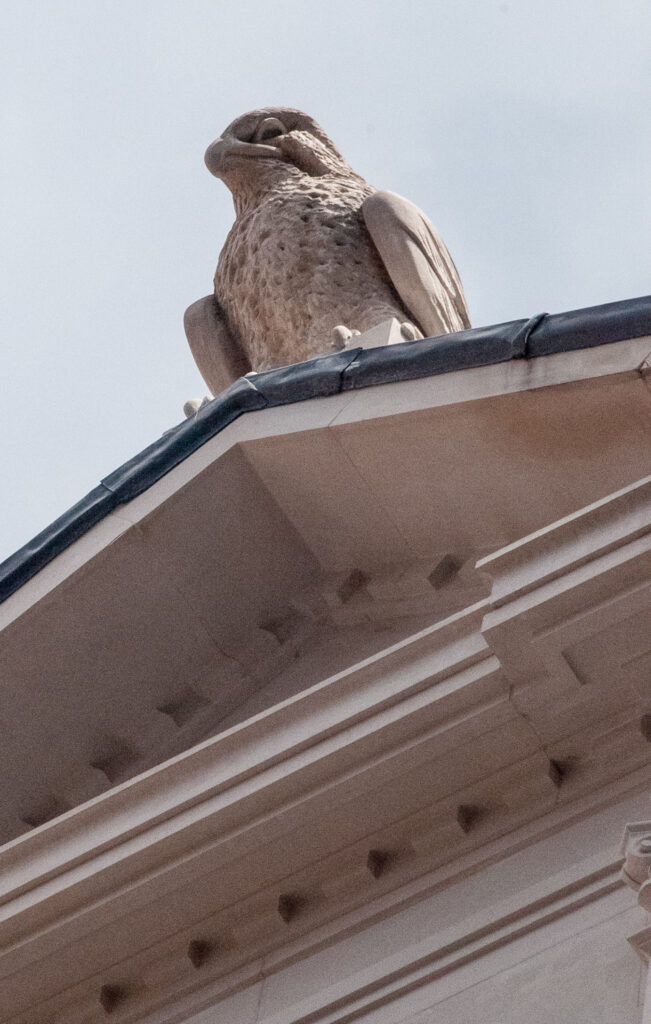
I must have walked past this building at 51-54 Gracechurch Street hundreds of times but never looked up and noticed two lines of extraordinary heads above and below the fifth floor windows …
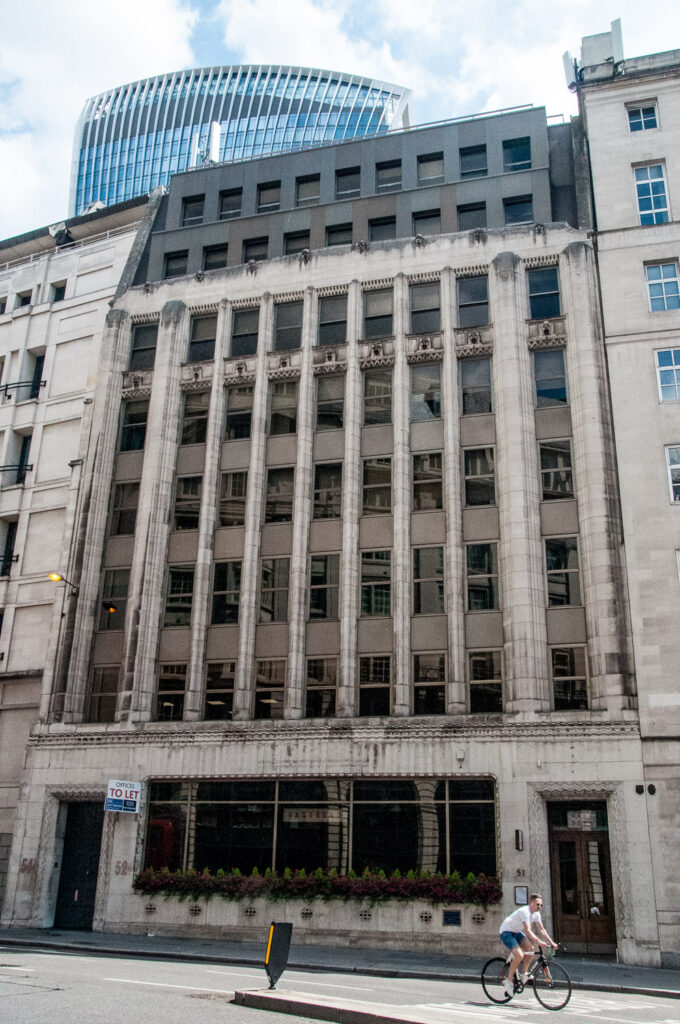
It was constructed between 1928 and 1930 and designed by the architect Leo Sylvester Sullivan. It has lovely Art Deco features but I have no idea why he incorporated the heads. There are 17 in total and this is a small selection …
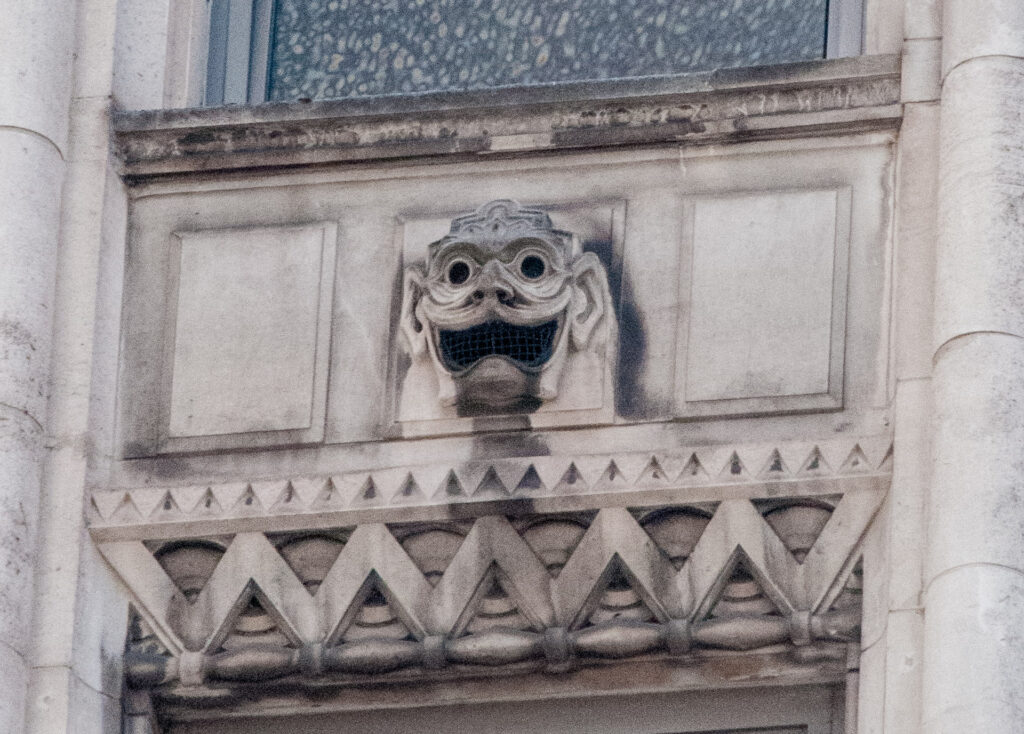
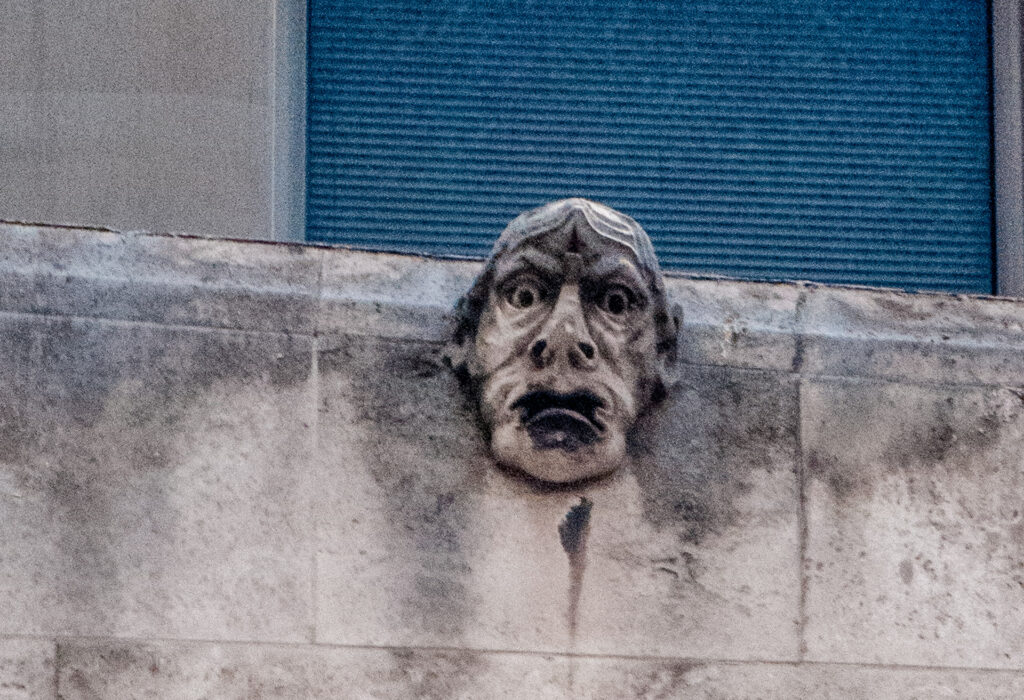
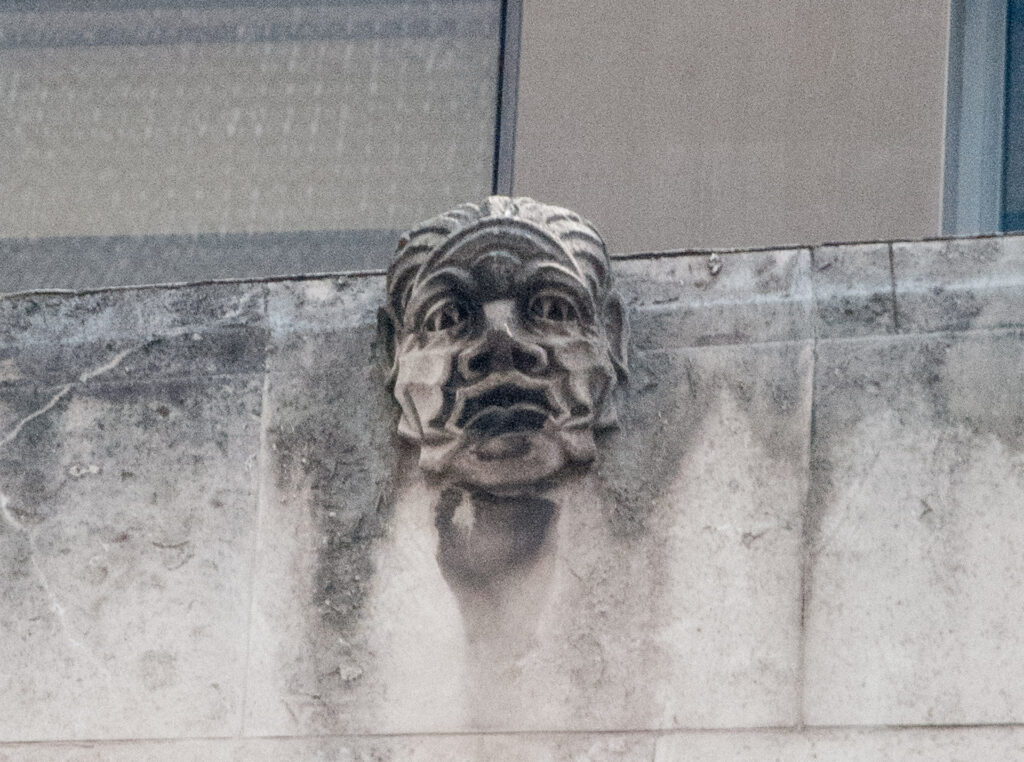
You can read more about the building on the excellent Look Up London website.
Another head, this time on the tower of St Margaret Pattens, Rood Lane (EC3M 1HS) …
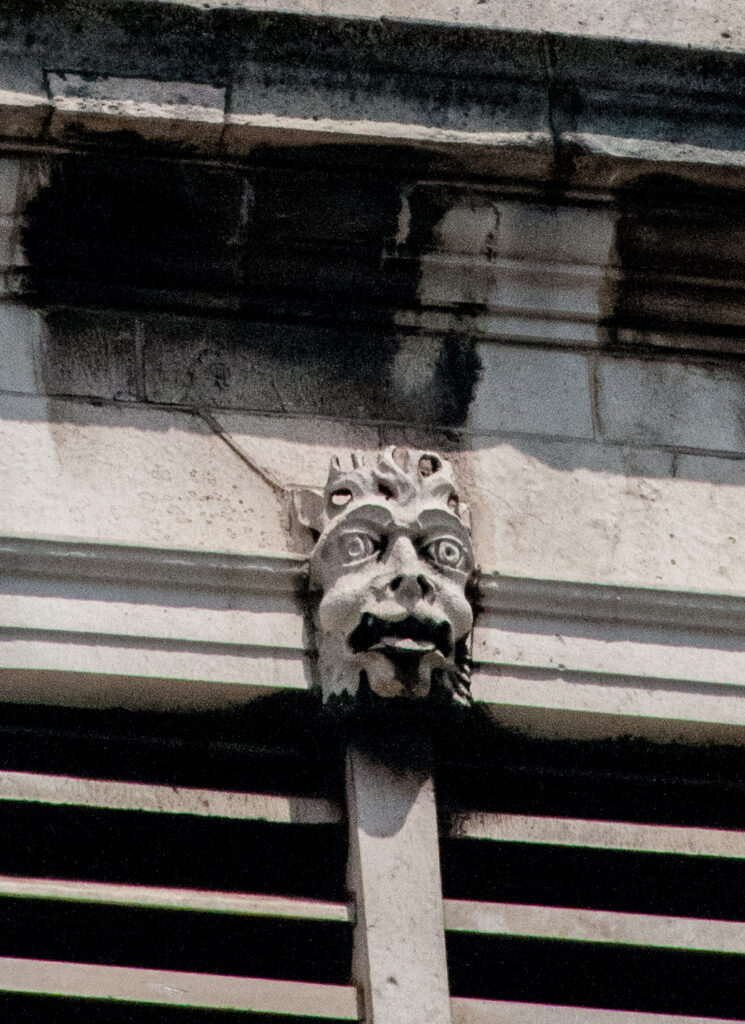
Two owls stand guard above the King William Street entrance to what was once the Guardian Royal Exchange Assurance Company’s City office…
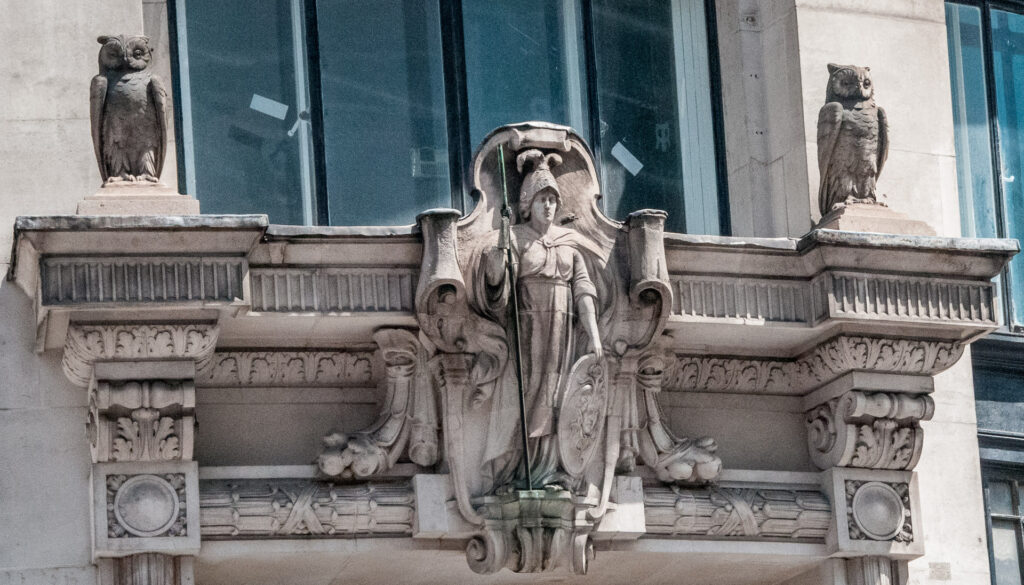
One of the delights of Eastcheap are these figures just below the roof of number 23 …
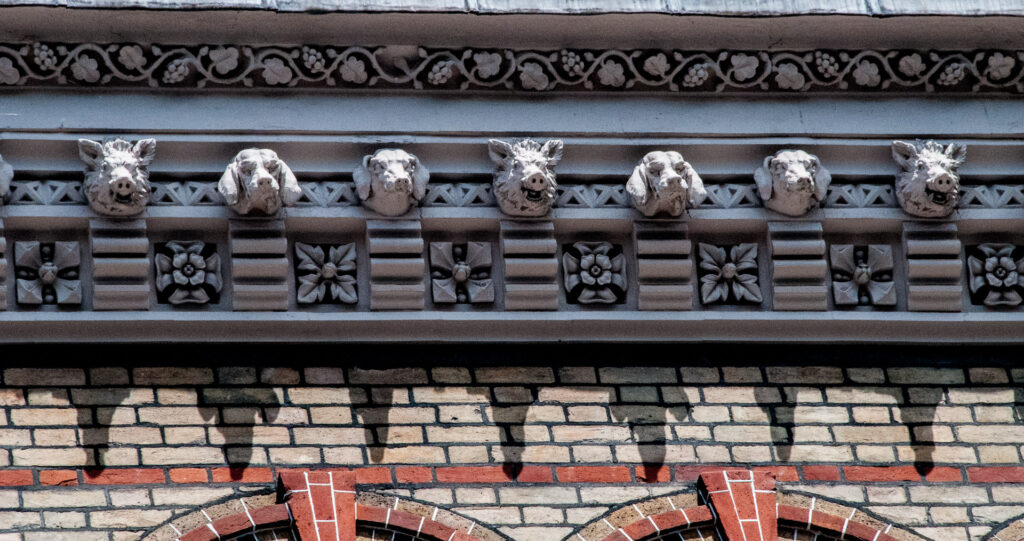
I cannot look at these dogs’ and boars’ heads without smiling. When I first photographed them a few years ago they had a splash of colour and I think it is a shame that this has been painted over …

A little further east at 33-35 another boar’s head peeps out from the undergrowth. It references the Eastcheap inn of that name which was supposed to be the meeting place of Sir John Falstaff, Prince Hal and other characters in Shakespeare’s Henry IV plays …
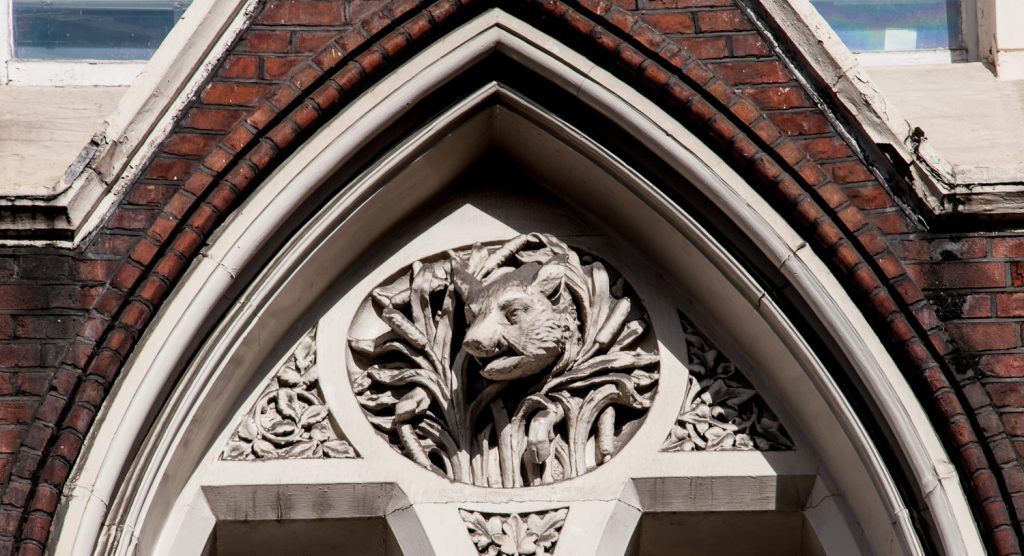
The Walkie Talkie looms over the area and dwarfs the remaining Victorian buildings including the one containing the boar’s head which dates from 1868. Pevsner described it as ‘one of the maddest displays in London of gabled Gothic’ and he quoted Ian Nairn, the architectural critic, who called it ‘the scream that you wake on at the end of a nightmare’ …
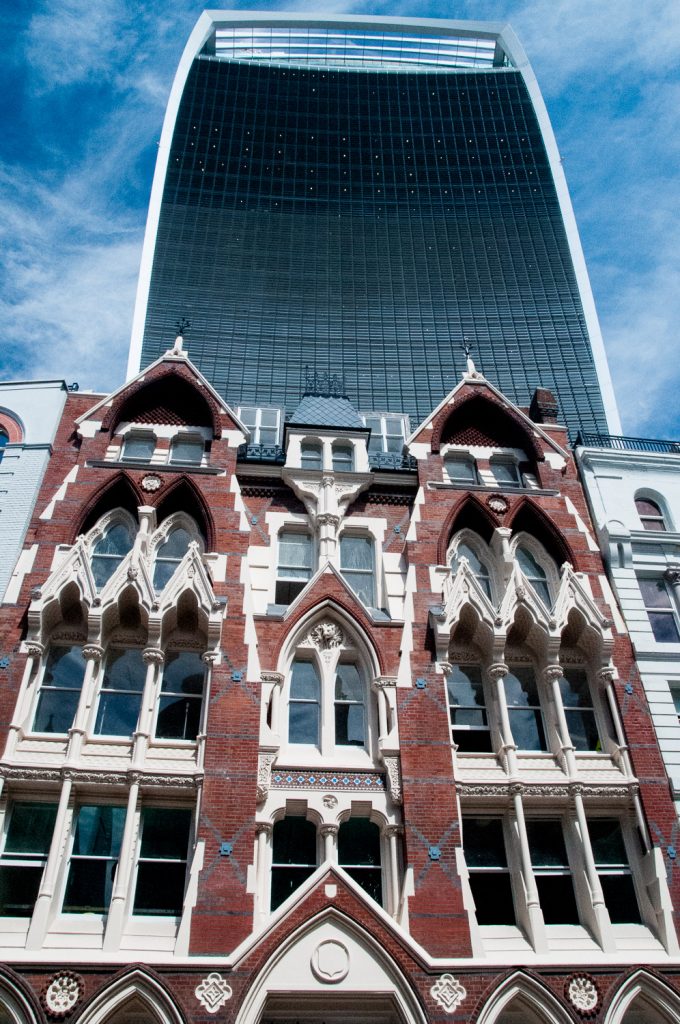
This creature on All Hallows by the Tower looks like an authentic gargoyle (water spout) but the downpipe or guttering is missing, maybe lost when the church was severely damaged in the war …

As I walked along Cornhill one day I glanced up and saw these rather sinister figures silhouetted against the sky…
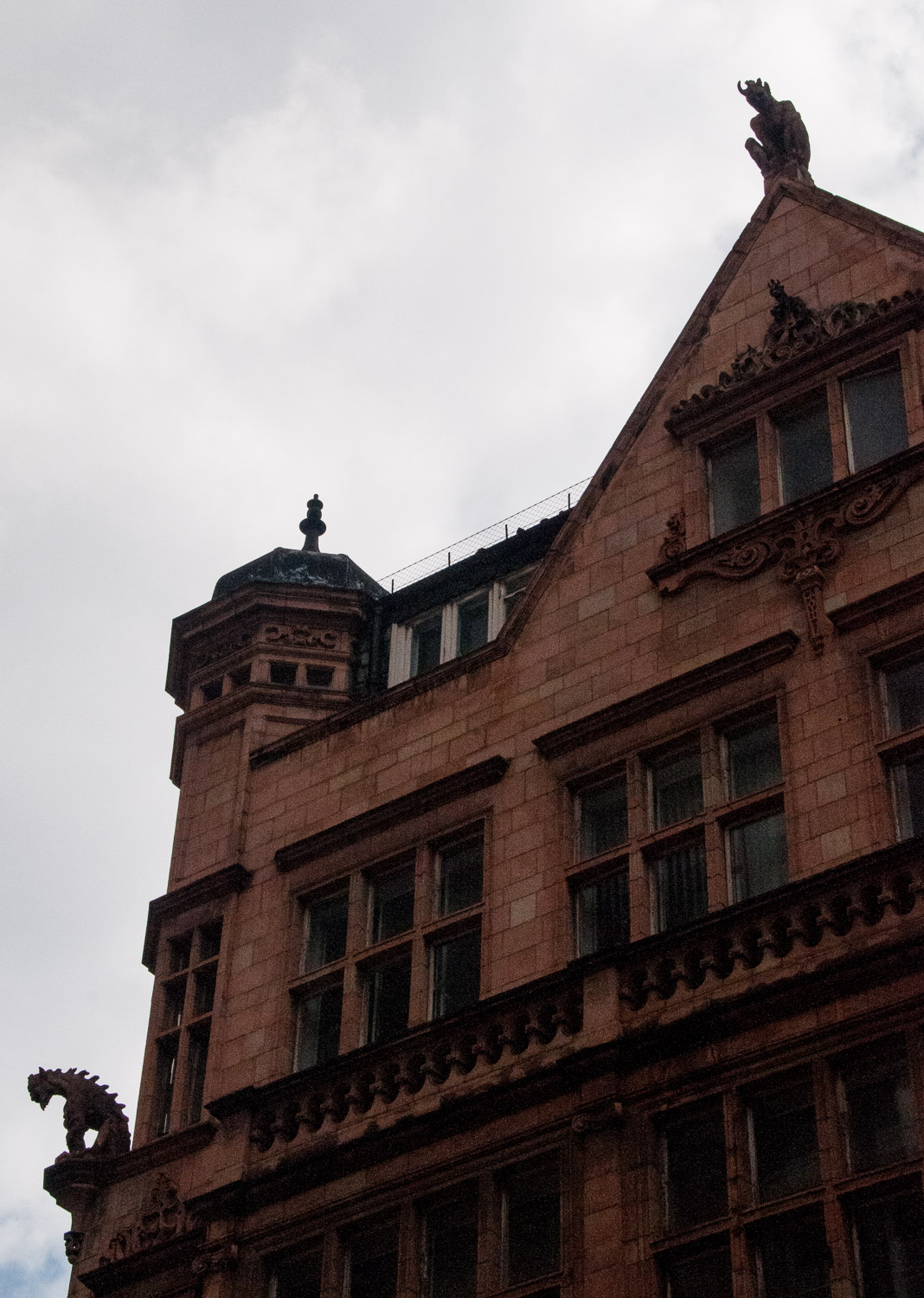
Closer inspection shows them to be devils, and rather angry and malevolent ones too …
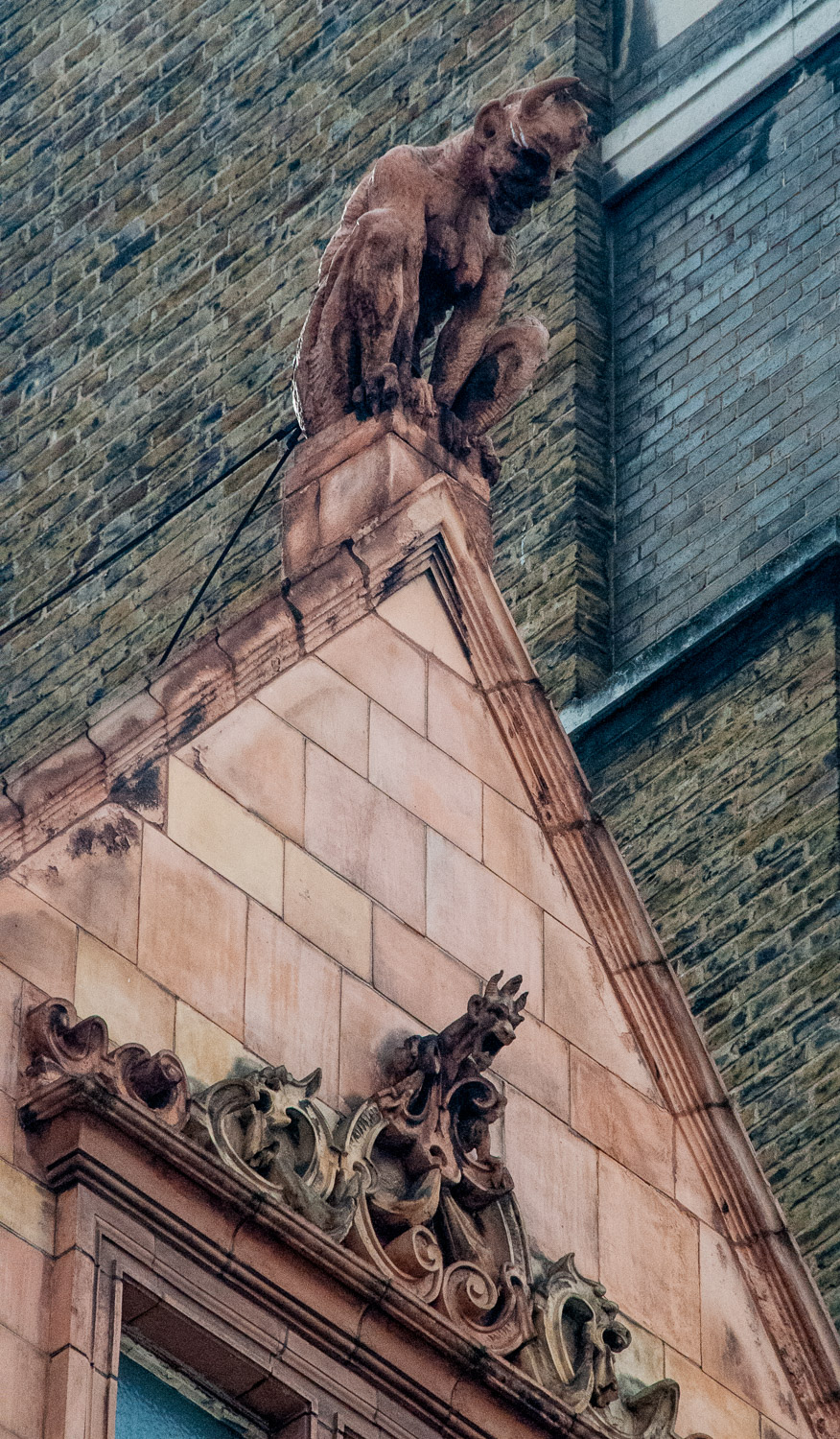
They look down on St Peter upon Cornhill and are known as the Cornhill Devils (EC3V 3PD). The story goes that, when plans were submitted for the late Victorian building next to the church, the rector noticed that they impinged slightly on church land and lodged a strong objection. Everything had to literally go back to the drawing board at great inconvenience and expense. The terracotta devils looking down on the entrance to the church are said to be the architect’s revenge with the lowest devil bearing some resemblance to the cleric himself …
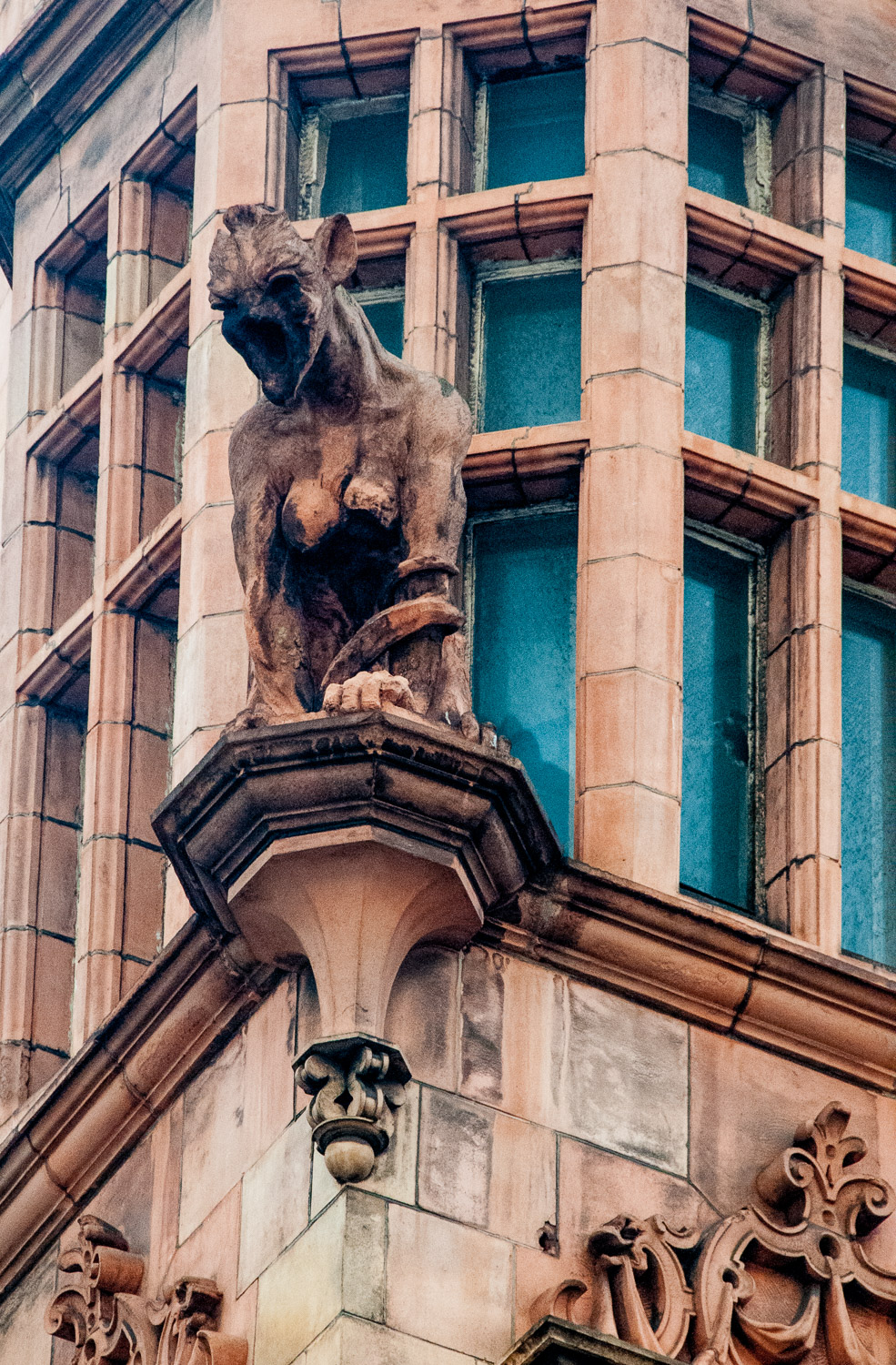
If this resembles the rector he must have been a pretty ugly guy.
And finally, two mice share a piece of cheese in Philpot Lane. There are several theories as to the story behind these charming little creatures but no one knows for sure who put them there and why …
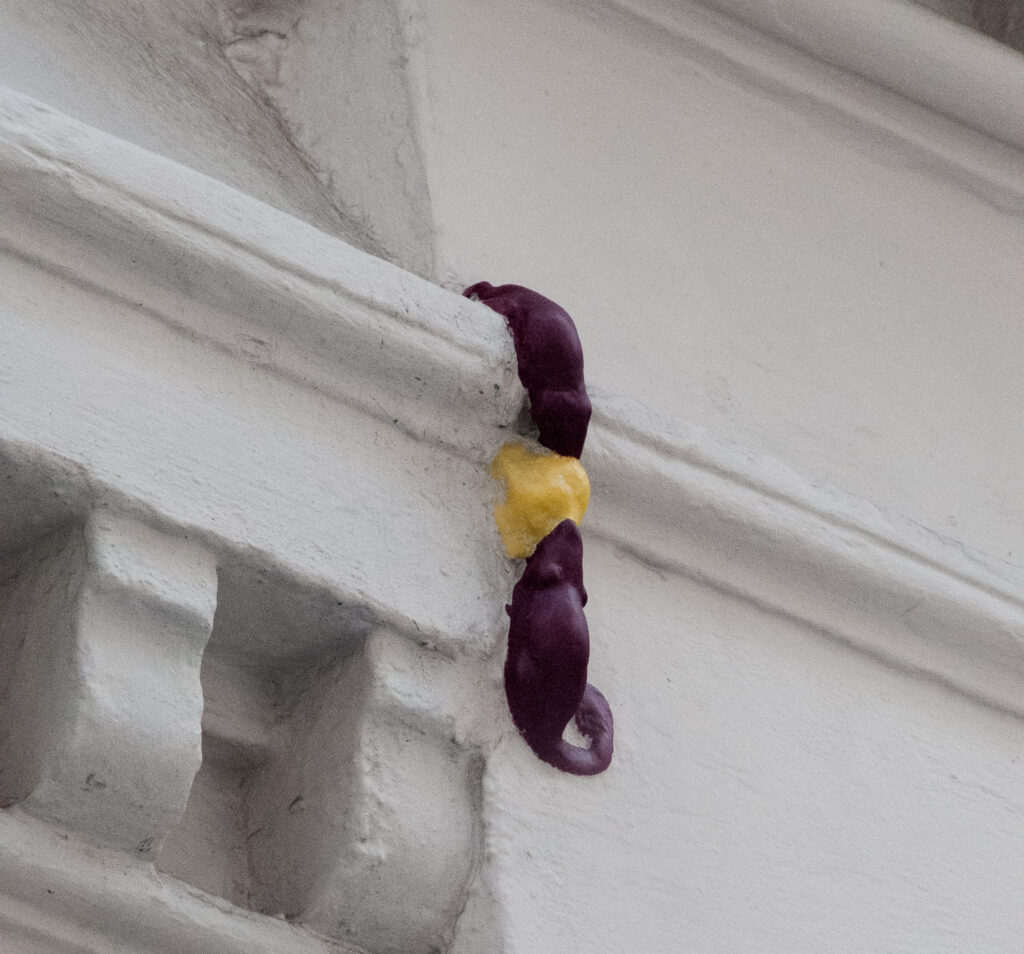
Remember you can follow me on Instagram :
